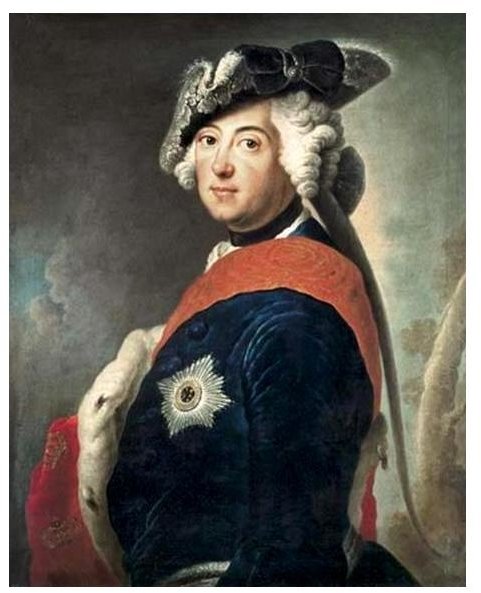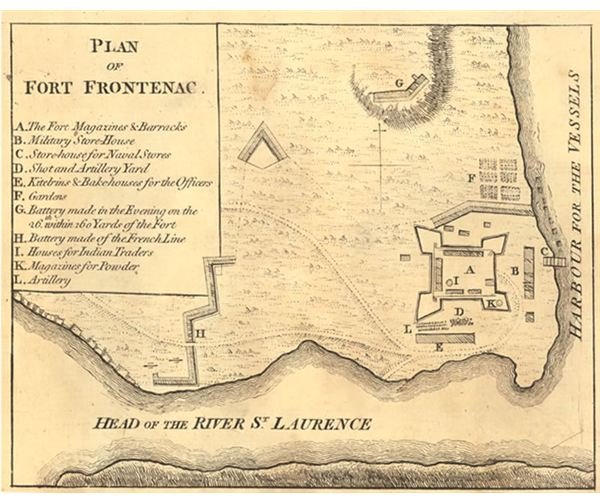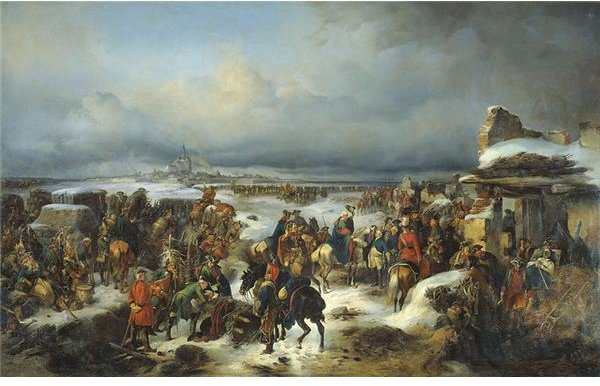French and Indian War: A Study Guide for History Students
The British held most of the east coast. The French held a long stretch from Canada to Louisiana. The land was rich in fur, lumber and other resources. The British aspired to expand west but could not expand past the French territory.
To fully understand what took place in the New World, we first need to look at what went on in Europe.
European Hostility
The powers of Europe had been fighting and moving borders around throughout history. The middle of the eighteenth century was dominated by feuds among the British, French, Spanish, Russians, Prussians, Dutch and Austrians. Not only were they desirous of each others’ European lands, but they were competing to colonize the rest of the globe. The Seven Years’ War (1756-1763) is the European name for this series of battles.
The Seven Years’ War was a global conflict involving all the major European powers. Battles took place in North America, Europe, Central America, West Africa, India and the Philippines. A bulk of the fighting took place between the seven-year period between 1756 and 1763, but the struggle has roots that go much earlier.
The Early Story
This war is a continuation of the War of the Austrian Succession. Maria Theresa was in line to inherit power over the Habsburg Dynasty in Austria. Prussia insisted that a woman could not be given that power, by law. The result was fighting from 1740-48 over European territory. Frederick the Great of Prussia seized Silesia of Austria. France allied with Prussia. Great Britain and the Dutch Republic allied with Austria.
In the end, peace was settled for a while with the Treaty of Aix-la-Chapelle. Silesia was given to Prussia but most of the other territories remained in the same hands. France’s King Louis XV returned all of his conquests. The move was very unpopular at home, where the people felt they fought for nothing, but was diplomatically effective throughout Europe.
Yet tension remained in Germany, where Prussia and Austria continued to tug. The citizens wanted one unified German state rather than two dynasties pulling back and forth.
Military Reform

Frederick the Great showcased mighty military strength, organization and strategy in the 1740s. His allies and enemies learned from his success and rebuilt their forces along his lines. Maria Theresa’s military genius surpassed many of her generals and she was brilliant with the morale of her troops.
France focused on building the strength of its land forces in Europe, where it had a long border to protect. On the other hand, Great Britain built up its naval power and supported Frederick in Prussia. With the aid of Prussia’s army, Britain was free to explore and conquer new territory.
The North American Conflict
France and Britain were bumping heads in the new world. Britain controlled much of the coast while France held a long belt of wilderness from Canada to Louisiana. Britain was ambitious to spread west but was prevented by French forts in the Ohio Valley.
The French were outnumbered on the continent and allied with the native population. Not only did they gain military strength, but also intimate knowledge of geography.
In 1753, Virginia’s Lieutenant Governor Robert Dinwiddie sent George Washington to Fort LeBoeuf, Pennsylvania, to force them out of British Territory. The French refused to move. Fighting broke out. Washington and his troops killed the commander.
The American Theater of the Seven Years’ War had begun.
The Start in Europe
In the 1750s, the French became unwilling to coexist with the threat of the great Prussian army and British navy combined. Together with Russia and Austria, they prepared to defend themselves and reduce the strength of Prussian and Britain.
In the spring of 1756, France attacked and captured the British territory Minorca in the Mediterranean. May 18, war was formally declared.
Frederick the Great had three goals to achieve by further war in Europe. First, strike the French in Saxony and capture their treasury. Second, take Bohemia and set up a winter camp there. Third, advance on Moravia and prepare for the death blow on Vienna.
Frederick succeeded in Saxony and Bohemia, but suffered serious losses at the latter. He suffered his first military defeat in 1757 as he was outmaneuvered in the fog by Austrian forces.
War in America

After his victory at Fort LeBoeuf, Washington’s forces built Fort Necessity at Great Meadows. The French captured it soon after. Washington resigned from service.
The war went back and forth from there. The British won at Acadia in Nova Scotia in 1755. The French won at Fort Duquesne. British Colonel William Johnson rallied back with a victory at Lake George.
Major blows were struck by the British in 1758. They seized Louisbourg, opening a path into Canada. From there, they took Fort Frontenac, cutting off French communication to all parts south. Then they made peace with the Iroquois, Shawnee and Delaware tribes, taking allies away from the French. After capturing Fort Niagara and Crown Point in 1759, the British held the entire western frontier.
British victories in Montreal and Quebec in 1760 marked the end of French control of Canada. French officially surrendered the territory on September 8. Practically speaking, the war ended September 15 when the British flag flew over Detroit. The French made some attempts to regain their forts and cities, but eventually had to give up.
The Treaties
On February 10, 1763, Great Britain, France and Spain made peace. The British took control off all of the French holdings in North America, with the exception of Louisiana, which went to the Spanish. Many of the French-Canadians, known as Acadians, settled in New Orleans. The term morphed from “Cadiens” to “Cajuns.”
Five days later, the Treaty of Hubertusburg was signed by Prussia, Austria and Saxony. No major changes were made to European borders, except that Silesia remained Prussian. Frederick and his empire were the strongest land-based military at the end of the war. Britain was the strongest naval power.
Every nation involved in the Seven Years’ War was economically exhausted by its end. The British need for new income spurred an age of exploration and increased taxation on its colonies. This pressure became a leading force for the Revolutionary War.
The War by Other Names
“French and Indian War” was the name given the conflict in North America by the British and Colonials. The French, however, call it “La Guerre de la Conquête” meaning “War of the Conquest.”
“Seven Years’ War” is the name for the conflict in Europe and around the world from 1756 to 1763. Although fighting in North America started in 1754, the title “Nine Years’ War” was already used to describe a European war from 1688 to 1697.
The part of this conflict occurring in India is known as the “Third Carnatic War.”
Fighting between Prussia and Austria is called the “Third Silesian War.”
The Swedish call it the “Pomeranian War” because they were only involved in Pomerania in north-central Germany.
References
- “French and Indian War,” History.com, http://www.history.com/topics/french-and-indian-war
- Image: Fall of Kolberg in 1761, http://commons.wikimedia.org/wiki/File:Fall_of_Kolberg_in_1761.jpg
- Image: Frederick the Great, http://commons.wikimedia.org/wiki/File:Frederic_II_de_prusse.jpg
- “Seven Years War,” New World Encyclopedia, http://www.newworldencyclopedia.org/entry/Seven_Years_War
- Image: Fort Frontenac, http://commons.wikimedia.org/wiki/File:MHSFortFrontenac.jpg
- “Seven Years War Timeline Begins,” http://www.ns1763.ca/remem/7yw-timeline-w.html#7yw-begintime
